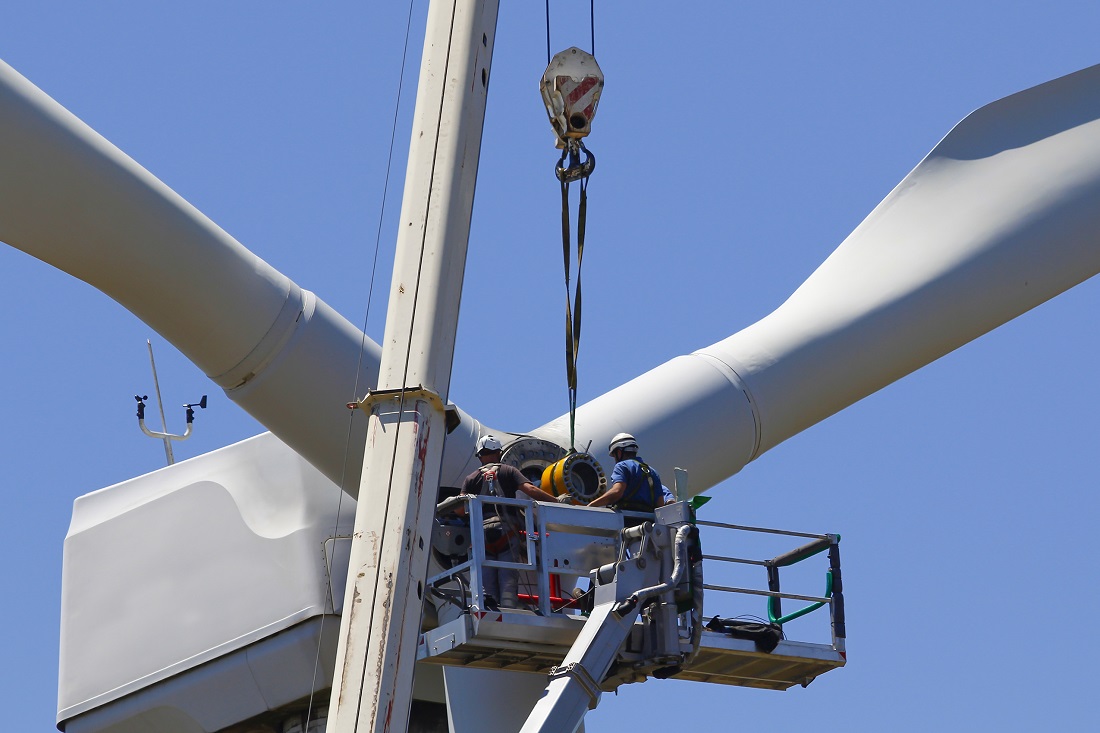
United States wind operations and annual maintenance spending is expected to increase by 50 percent from 2018 to more than $7.5 billion by 2030, according to a recent report by IHS Markit. The forecasted increase stems from a race to leverage a soon-to-expire U.S. federal tax credit for wind energy.
The U.S. production tax credit, or PTC, provides operators with a tax credit per kilowatt hour of renewable electricity generation for the first 10 years a facility is in operation, according to the U.S. Energy Information Administration. Initially set to expire for all eligible technologies at the end of 2012, it was later retroactively renewed. When renewed in 2013, the PTC provided a maximum tax credit for wind generation of 2.3 cents per kilowatt hour for the first 10 years of production. Under the PTC phase out, the amount of the tax credit decreases by 20 percentage points per year from 2017 through 2019. Facilities that begin construction after Dec. 31 this year will not be able to claim the production tax credit.
The tax credit and technology advancements have spurred heavy investment in new wind projects, the company estimates, with 2018 capital spending reaching $12 billion. The company forecasts that capital spending on new wind projects will average $14 billion a year during 2019-2021. Following that tax-credit induced surge and the expiration of the tax credit, capital spending is expected to slow. The current surge, however, will drive growth in operations maintenance spending during the 2020s. The company believes the early 2020s will also mark a transition in wind industry employment opportunities from construction to operations and maintenance jobs.
Wind operations job growth will be particularly strong in the next decade, IHS Markit Associate Mike McNulty, who authored the report, said in a news release. “We estimate the number of these jobs in North America to increase from about 6,000 today to nearly 9,000 by 2030.”
In regional trends, the report found that Texas far outpaced other states and provinces in 2018 wind operations and maintenance spending and employment. The states 2018 O&M spending reached nearly $1.3 billion, which IHS Markit said reflected that it is the state with the most wind power capacity. California followed with more than $400 million in such spending in 2018.
In the coming years, the company expects this type of wind spending and employment growth to be stronger in the Greater Plains and upper Midwestern states, such as Iowa, Oklahoma, Kansas, Illinois, Colorado and Minnesota. By 2030, the company said, these six states will increase annual operations and maintenance spending by $1.3 billion.
The IHS Markit study covers data from more than 340 wind projects, representing 36,000 megawatts of capacity and more than 20,000 turbines installed in North America.
The United States total wind power capacity grew 8 percent in 2018 to more than 96,400 megawatts, the American Wind Energy Association announced in May this year.
Installation of lubricants and greases is part of the maintenance procedures for wind turbines. Gear oils account for the majority of wind turbine lubricant demand, followed by hydraulic fluids and greases.
Gear oil is used for wind turbine gearboxes, which are eliminated in some newer direct drive turbines. Hydraulic fluid is used in the hydraulic systems that control the pitch – the angle of the blades in the wind. Grease is used in several wind turbine locations: the main rotor shaft bearing; the yaw bearing, pitch or blade bearings; pitch drive gears; and generator bearings.
The report is titled “IHS Markit 2019 Wind Power Plant Benchmarking in North America: Technological Advancements for Operations and Maintenance.”